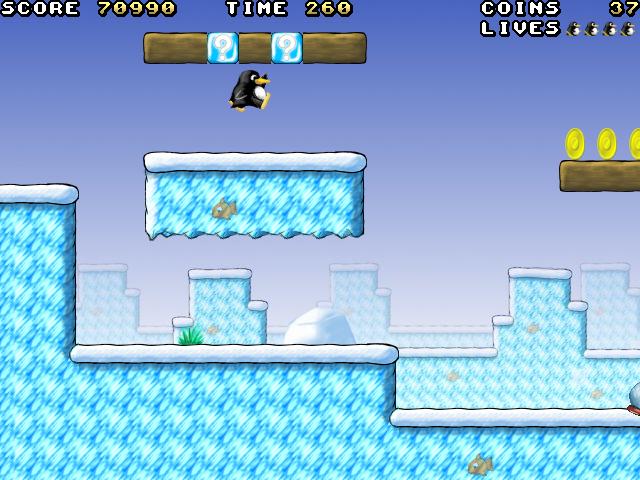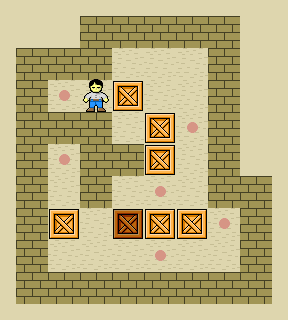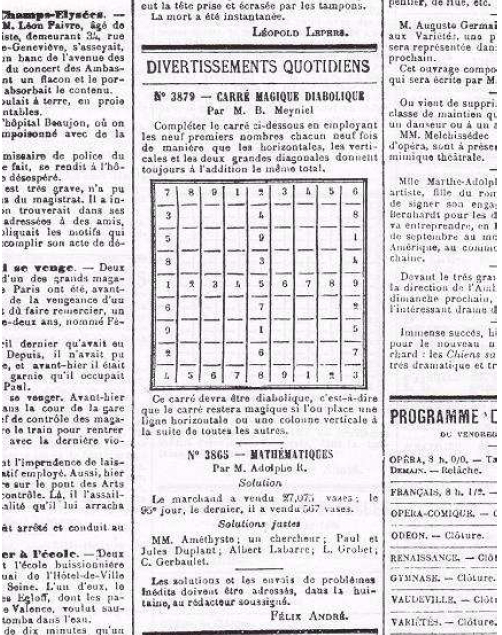|
VG Pocket
VG Pocket is a series of handheld dedicated game consoles built by JungleTac and sold by Performance Designed Products LLC. The VG Pocket model was the first console of its type to have a 2" backlit color LCD screen. Description The consoles have built-in games, the number of which varies with each model and many are clones and hacks of old Nintendo Entertainment System and arcade games. The devices also have a TV-out port with composite video and audio streaming through a non-standard stereo mini headset jack. In 2008, the Caplet and Tablet models were also finalists in the International Design Excellence Awards; they were designed by Stuart Karten Design, a Los Angeles-based industrial design firm. Versions There are five VG Pocket models available: * VG Pocket Mini: 30 built-in games and a 1.5" screen. * VG Pocket 50: 50 built-in games and a 2" screen. * VG Pocket Max: 75 built-in games and a 2.5" screen. * VG Pocket Caplet: 50 games, including licensed versions of ... [...More Info...] [...Related Items...] OR: [Wikipedia] [Google] [Baidu] |
Handheld Game Console
A handheld game console, or simply handheld console, is a small, portable self-contained video game console with a built-in screen, game controls and speakers. Handheld game consoles are smaller than home video game consoles and contain the console, screen, speakers, and controls in one unit, allowing players to carry them and play them at any time or place.Li, Frederick W. B. Computer Games'. . Durham University. Retrieved December 19, 2008. p. 4. In 1976, Mattel introduced the first handheld electronic game with the release of ''Mattel Auto Race, Auto Race''. Later, several companies—including Coleco and Milton Bradley Company, Milton Bradley—made their own single-game, lightweight table-top or handheld electronic game devices. The first commercially successful handheld console was Merlin (console), Merlin from 1978, which sold more than 5 million units. The first handheld game console with interchangeable ROM cartridge, cartridges is the Milton Bradley Microvision in 1979 ... [...More Info...] [...Related Items...] OR: [Wikipedia] [Google] [Baidu] |
Dreamcast
The is the final home video game console manufactured by Sega. It was released in Japan on November 27, 1998, in North America on September 9, 1999 and in Europe on October 14, 1999. It was the first sixth-generation video game console, preceding Sony's PlayStation 2, Nintendo's GameCube, and Microsoft's Xbox. The Dreamcast's discontinuation in 2001 ended Sega's 18 years in the console market. A team led by Hideki Sato began developing the Dreamcast in 1997. In contrast to the expensive hardware of the unsuccessful Saturn, the Dreamcast was designed to reduce costs with off-the-shelf components, including a Hitachi SH-4 CPU and an NEC PowerVR2 GPU. Sega used the GD-ROM media format to avoid the expenses of DVD-ROM technology. Developers were able to include a custom version of the Windows CE operating system on game discs to make porting PC games easy, and Sega's NAOMI arcade system board allowed nearly identical conversions of arcade games. The Dreamcast was the ... [...More Info...] [...Related Items...] OR: [Wikipedia] [Google] [Baidu] |
Don Doko Don
is a platform arcade game developed and released by Taito in 1989. In the game, the player(s) control two lumberjacks, Bob and Jim, with the objective being to clear the screen of all the enemies. Bob and Jim use their mallets to stun the enemies, pick up the enemies, then throw them at a wall, or other enemies to kill them off, resulting in bonus points. Bonus items also appear during stages that will have varying effects on the players. Taito and ITL ported the game to both the Family Computer and PC-Engine in 1990, both of which remained exclusive to Japan. A sequel game, aptly named '' Don Doko Don 2'', was released in 1992 for the Family Computer in Japan, developed by Natsume Co., Ltd. The gameplay has been often compared to Taito's earlier platform games, specifically ''Bubble Bobble'' and ''The NewZealand Story''. The original arcade version of the game was included in both '' Taito Memories Joukan'' and ''Taito Legends 2'' in 2005, the ''Egret II Mini'' in 2022 and the ... [...More Info...] [...Related Items...] OR: [Wikipedia] [Google] [Baidu] |
Pengo (video Game)
is an arcade video game developed by Coreland and published by Sega. It was first released in Japan on September 26, 1982, in North America the following month, and in Europe that December. The player controls Pengo, a red penguin that resides in the Antarctic. The game takes place in an overhead maze made of ice blocks, where Pengo crushes blob-like Sno-Bees by sliding blocks into them. The objective is to survive each round by eliminating all Sno-Bees and Sno-Bee eggs, while optionally lining up the three diamond blocks to earn a large score bonus. There are two versions of the arcade game: the first uses "Popcorn" as the theme, and the second has original music. There are other small differences as well. ''Pengo'' was ported to the Atari 2600, Atari 5200, Atari 8-bit computers, and Game Gear. Gameplay The player uses a four-position joystick and a single button to control Pengo, a penguin character. Pressing the button while pushing the joystick against an ice block will c ... [...More Info...] [...Related Items...] OR: [Wikipedia] [Google] [Baidu] |
Tetris
''Tetris'' () is a puzzle video game created in 1985 by Alexey Pajitnov, a Soviet software engineer. In ''Tetris'', falling tetromino shapes must be neatly sorted into a pile; once a horizontal line of the game board is filled in, it disappears, granting points and preventing the pile from overflowing. Over 200 versions of ''Tetris'' have been published by numerous companies on more than 65 platforms, often with altered game mechanics, some of which have become standard over time. To date, these versions of ''Tetris'' collectively serve as the second-best-selling video game series with over 520 million sales, mostly on mobile devices. In the 1980s, Pajitnov worked for the Computing Center of the Academy of Sciences, where he programmed ''Tetris'' on the Elektronika 60 and adapted it to the IBM PC with the help of Dmitry Pavlovsky and Vadim Gerasimov. Floppy disk copies were distributed freely throughout Moscow, before spreading to Eastern Europe. Robert Stein of Andro ... [...More Info...] [...Related Items...] OR: [Wikipedia] [Google] [Baidu] |
Star Fox (1993 Video Game)
''Star Fox'', known as ''Starwing'' in PAL regions, is a 1993 Rail shooter, rail shooter game developed by Nintendo and Argonaut Games, Argonaut Software, and published by Nintendo for the Super Nintendo Entertainment System. The first entry in the ''Star Fox'' series, the story follows Fox McCloud and the rest of the List of Star Fox characters#Star Fox Team, Star Fox team defending their homeworld of Corneria against the invading forces of List of Star Fox characters#Andross, Andross. ''Star Fox'' was the second 3D Nintendo game after ''X (1992 video game), X'' for the Game Boy in 1992, and the first Nintendo game to use polygon (computer graphics), polygonal graphics, achieved with the Super FX graphics chip included in the cartridge. The complex display of three-dimensional models with polygons was uncommon in console games at the time. ''Star Fox'' received critical acclaim and is often considered one of the List of video games considered the best, greatest video games of a ... [...More Info...] [...Related Items...] OR: [Wikipedia] [Google] [Baidu] |
Platform Game
A platformer (also called a platform game, and sometimes a jump 'n' run game) is a subgenre of action game in which the core objective is to move the player character between points in an environment. Platform games are characterized by levels with uneven terrain and suspended platforms that require jumping and climbing to traverse. Other acrobatic maneuvers may factor into the gameplay, such as swinging from vines or grappling hooks, jumping off walls, gliding through the air, or bouncing from springboards or trampolines. The genre started with the 1980 arcade video game ''Space Panic'', which has ladders but not jumping. ''Donkey Kong (arcade game), Donkey Kong'', released in 1981, established a template for what were initially called "climbing games". ''Donkey Kong'' inspired many clones and games with similar elements, such as ''Miner 2049er'' (1982) and ''Kangaroo (video game), Kangaroo'' (1982), while the Sega arcade game ''Congo Bongo'' (1983) adds a third dimension via I ... [...More Info...] [...Related Items...] OR: [Wikipedia] [Google] [Baidu] |
Sokoban
is a puzzle video game in which the player pushes boxes around in a warehouse, trying to get them to storage locations. The game was designed in 1981 by Hiroyuki Imabayashi and first published in Japan in 1982 by his company Thinking Rabbit for the NEC PC-8801 computer. It was later ported to various platforms and followed by new titles. It became popular in Japan and internationally, inspiring unofficial versions, a subgenre of box-pushing puzzle games, and artificial intelligence research. Gameplay The warehouse is a grid composed of floor squares and impassable wall squares. Some floor squares contain a box and some are marked as storage locations. The number of boxes equals the number of storage locations. The player, often represented as a worker character, can move one square at a time horizontally or vertically onto empty floor squares, but cannot pass through walls or boxes. To move a box, the player walks up to it and pushes it to an empty square directly beyond the ... [...More Info...] [...Related Items...] OR: [Wikipedia] [Google] [Baidu] |
Sudoku
Sudoku (; ; originally called Number Place) is a logic puzzle, logic-based, combinatorics, combinatorial number-placement puzzle. In classic Sudoku, the objective is to fill a 9 × 9 grid with digits so that each column, each row, and each of the nine 3 × 3 subgrids that compose the grid (also called "boxes", "blocks", or "regions") contains all of the digits from 1 to 9. The puzzle setter provides a partially completed grid, which for a well-posed problem, well-posed puzzle has a single solution. French newspapers featured similar puzzles in the 19th century, and the modern form of the puzzle first appeared in 1979 puzzle books by Dell Magazines under the name Number Place. However, the puzzle type only began to gain widespread popularity in 1986 when it was published by the Japanese puzzle company Nikoli (publisher), Nikoli under the name Sudoku, meaning "single number". In newspapers outside of Japan, it first appeared in ''The Conway Daily Sun'' (New Hamp ... [...More Info...] [...Related Items...] OR: [Wikipedia] [Google] [Baidu] |
Data East
, also abbreviated as DECO, was a Japanese video game, pinball and electronic engineering company. The company was in operation from 1976 to 2003, and released 150 video game titles. At one time, the company had annual sales of 20 billion yen in the United States alone but eventually went bankrupt. The American subsidiary, Data East USA, was headquartered in San Jose, California. Its main headquarters were located in Suginami, Tokyo. The majority of Data East's video games, its trademark and logo, are owned today by the mobile gaming company G-Mode, a subsidiary of Marvelous (company), Marvelous. A small number of Data East video games are owned by other companies, notably Paon DP. History Data East was founded on April 20, 1976, by Tokai University alumnus Tetsuo Fukuda. Data East developed and released in July 1977 its first arcade game ''Jack Lot'', a medal game based on Blackjack for business use. This was followed in January 1978 by ''Super Break'' which was its first actual ... [...More Info...] [...Related Items...] OR: [Wikipedia] [Google] [Baidu] |
Puzzle Bobble
internationally known as ''Bust-A-Move'', is a 1994 tile-matching puzzle arcade game developed and published by Taito. It is based on the 1986 arcade game ''Bubble Bobble'', featuring characters and themes from that game. Its characteristically cute Japanese animation and music, along with its play mechanics and level designs, made it successful as an arcade title and spawned several sequels and ports to home gaming systems. Gameplay At the start of each round, the rectangular playing arena contains a prearranged pattern of colored "bubbles". At the bottom of the screen, the player controls a device called a "pointer", which aims and fires bubbles up the screen. The color of bubbles fired is randomly generated and chosen from the colors of bubbles still left on the screen. The objective of the game is to clear all the bubbles from the arena without any bubble crossing the bottom line. Bubbles will fire automatically if the player remains idle. After clearing the arena, the n ... [...More Info...] [...Related Items...] OR: [Wikipedia] [Google] [Baidu] |
Taito
is a Japanese company that specializes in video games, Toy, toys, arcade cabinets, and game centers, based in Shinjuku, Tokyo. The company was founded by Michael Kogan in 1953 as the importing vodka, Vending machine, vending machines, and Jukebox, jukeboxes into Japan. It began production of video games in 1973. In 2005, Taito was purchased by Square Enix, becoming a wholly owned subsidiary by 2006. Taito is recognized as an important industry influencer in the early days of video games, producing a number of hit arcade games such as ''Speed Race'' (1974), ''Western Gun'' (1975), ''Space Invaders'' (1978), ''Bubble Bobble'' (1986), and ''Arkanoid'' (1986). Alongside Capcom, Konami, Namco, and Sega, it is one of the most prominent video game companies from Japan and the first that exported its games into other countries. Several of its games have since been recognized as important and revolutionary for the industry – ''Space Invaders'' in particular was a major contributor to ... [...More Info...] [...Related Items...] OR: [Wikipedia] [Google] [Baidu] |




